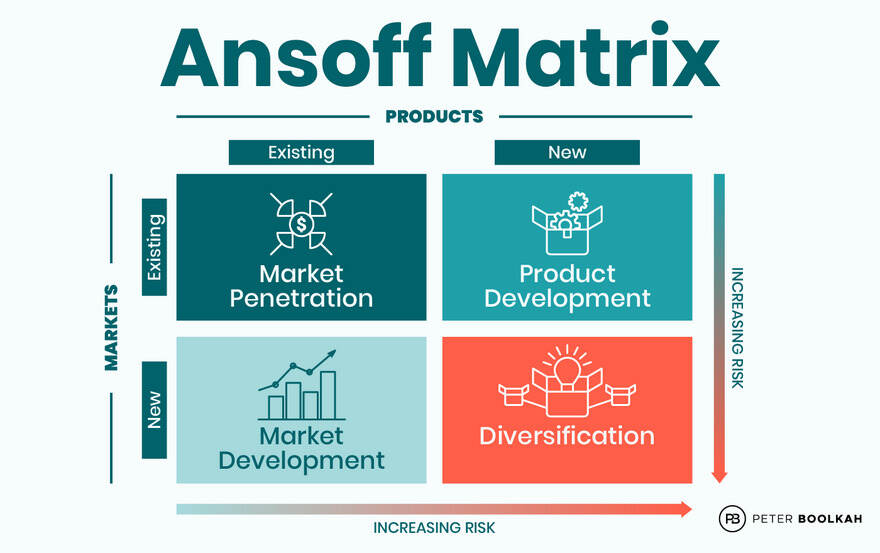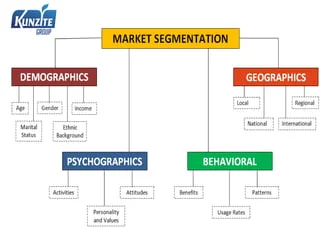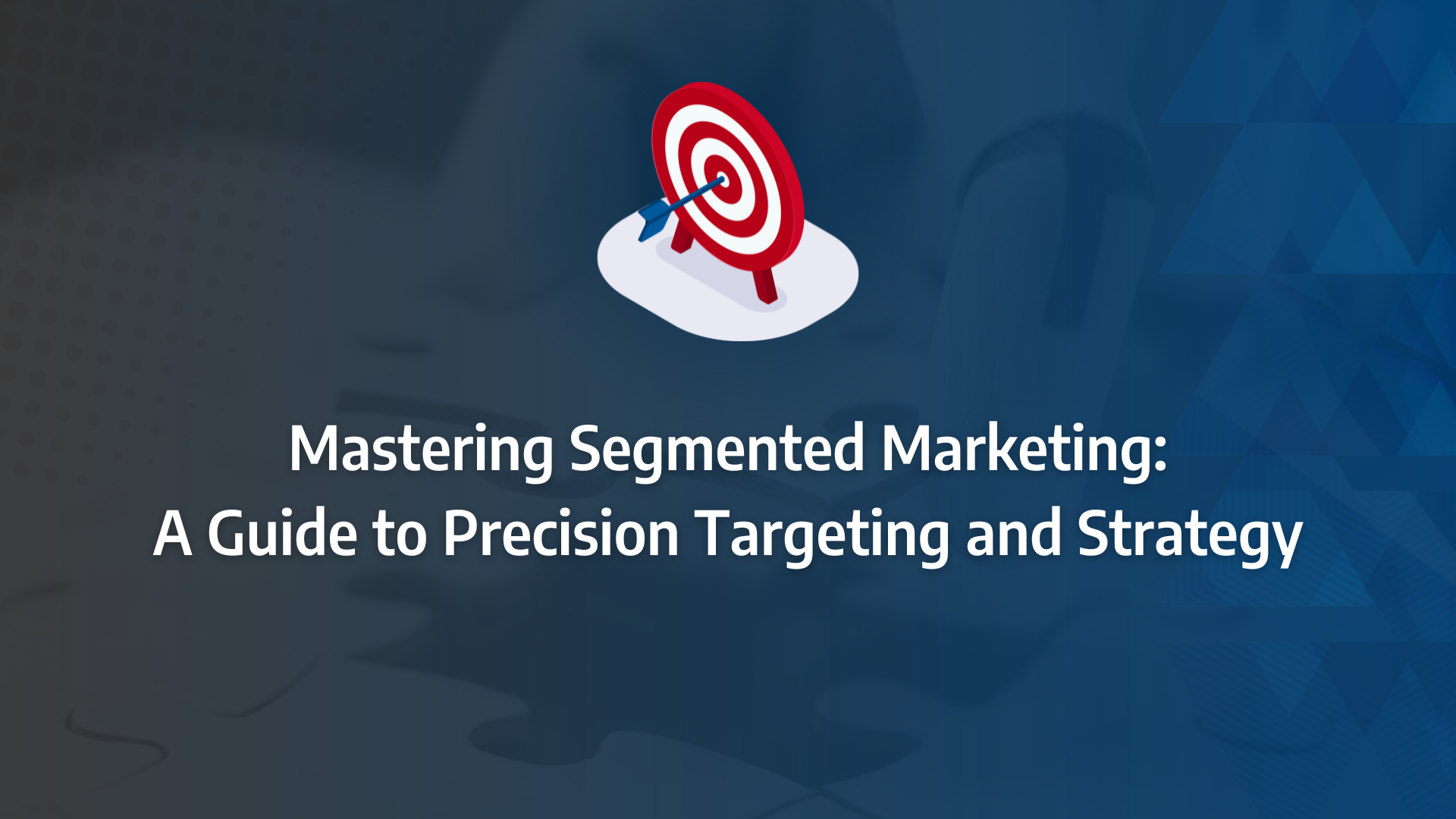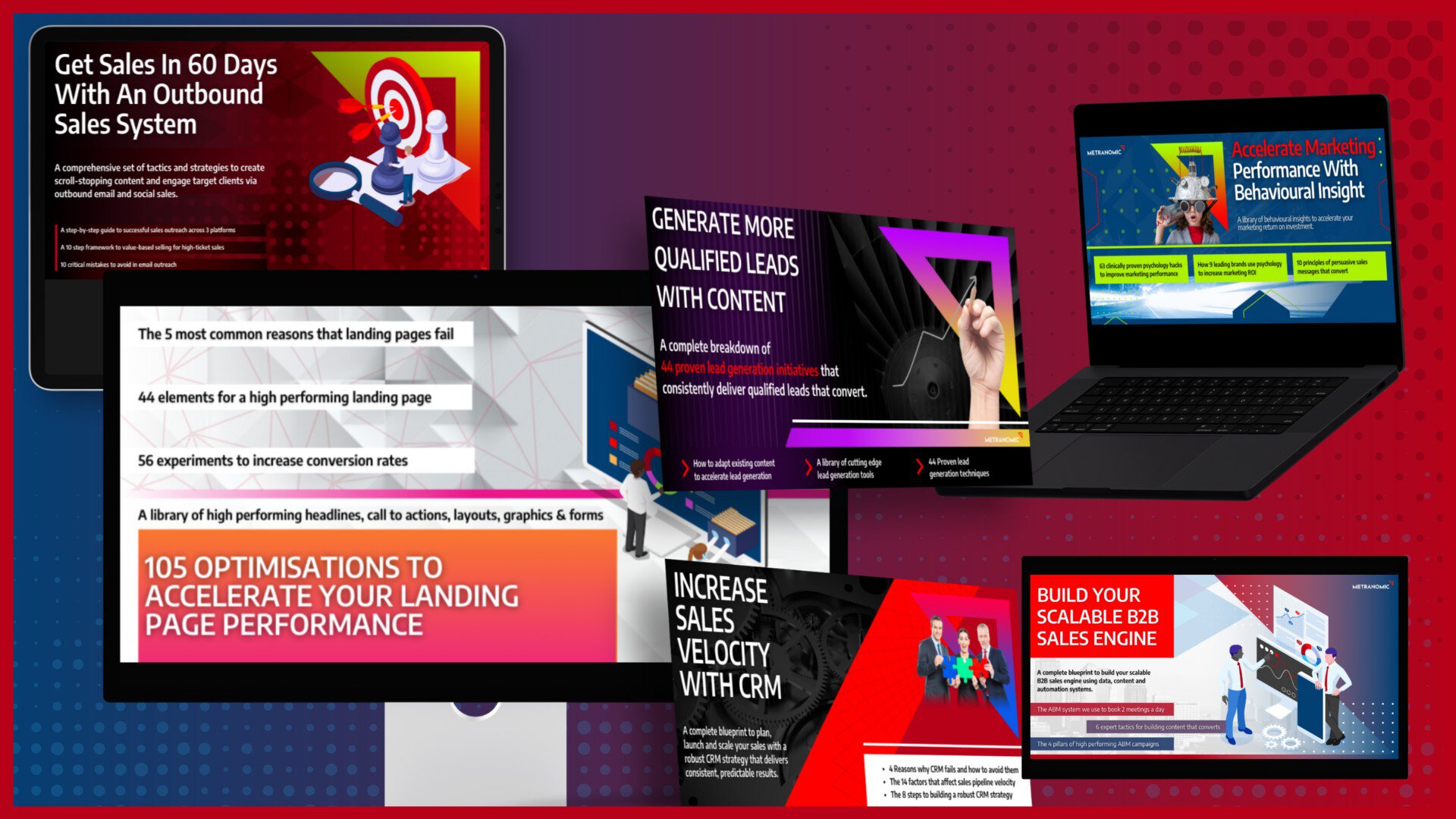If your messages aren’t reaching the right audience, your campaigns are likely missing the mark. The challenge? Figuring out how to target your ideal customers with precision and relevance. Segmented marketing is the answer. By using approaches like geographic and psychographic segmentation, you can craft highly targeted strategies that speak directly to each customer group. Imagine delivering tailored content that addresses your audience’s unique needs and pain points—boosting engagement, conversions, and, ultimately, your ROI. In this guide, we’ll show you exactly how to master segmentation, helping you target smarter, not broader.
- Leverage segmentation to enhance precision: Identify your key customer segments and tailor your marketing strategies to speak directly to each group, improving engagement and conversions.
- Use a variety of segmentation strategies: Implement geographic, demographic, behavioural, and psychographic segmentation to build a well-rounded marketing approach that covers all bases.
- Gather and analyse customer data: Collect relevant data on your customers to better understand their preferences, behaviours, and pain points. Use this data to inform your segmentation strategies.
- Create personalised campaigns: Develop marketing messages that resonate with the unique needs of each customer segment, increasing the effectiveness of your campaigns.
- Continuously measure and adapt: Track the performance of your segmented campaigns and make adjustments based on the results to ensure ongoing success.
- Align segmentation with business goals: Choose the segmentation strategies that best align with your company’s broader goals and objectives, ensuring every campaign moves you closer to success.
- Focus on relevance to boost ROI: Personalised and targeted messaging drives higher ROI by engaging the right audience with the right content at the right time.
What is Marketing Segmentation?
Segmented marketing is the essential practice of dividing your Total Addressable Market (TAM) into distinct audience segments, each defined by shared characteristics. This allows you to target the accounts that are most likely to find value in your offering. By narrowing down the TAM, which includes all potential customers who could benefit from your solution, you can focus your efforts more strategically.
Typically, businesses implement demographic segmentation, using firmographics such as company size, industry, and location to divide their TAM. However, more advanced segmentation methods, such as separating by technology usage, buyer intent, personas, and buyer journey stage, are also effective. Often, businesses combine several of these methods to sharpen their focus and better tailor their messaging.
Even though the companies in your target market will fit your Ideal Customer Profile (ICP)—a detailed description of your optimal customer base—the sheer volume of prospects can still be overwhelming. This is where narrowing your scope becomes invaluable. By further refining your target accounts into a specific Target Account List (TAL) and segmenting it into smaller “audiences”, you can ensure your resources are channelled into the most qualified, in-market companies. This focused approach leads to higher engagement, better opportunities, and ultimately, more customers.
What Matters Most?
Identifying the unique needs of different customer segments is vital for tailoring your messaging effectively. Clients often discover that crafting content that directly addresses the pain points of each segment enhances engagement significantly. Typically, leveraging advanced analytics to uncover hidden segments within customer data allows for more precise targeting, driving higher conversion rates and fostering long-term loyalty.Get In Touch
Customer Segmentation vs Market Segmentation
At this stage, it’s critical to differentiate between customer segmentation and market segmentation, two strategies that, while related, serve distinct purposes in a B2B environment.
Customer Segmentation
This approach zeroes in on your existing clients, categorising them based on factors such as their purchasing history, interaction with your services, and potential for future engagement. It’s an essential tactic for customer retention and growth, helping you to unlock deeper insights into your client base and how to better serve them.
Market Segmentation
Conversely, market segmentation casts a wider net, identifying potential customer groups in the broader market who have yet to engage with your business. It examines external factors that might influence their decision to engage with your company, helping you develop strategies to attract new customers.
Though these approaches are intertwined, customer segmentation focuses more on leveraging your current base for upselling, cross-selling, and retention, while market segmentation is key to expanding your reach and attracting new business.

How B2B and B2C Market Segmentation Differ
To fully grasp the importance of B2B segmented marketing, it’s necessary to understand how it diverges from B2C market segmentation. While both involve segmenting the market, the differences between B2B and B2C are significant, largely due to the complexity of transactions and the extended buyer journey in B2B markets.
Decision-Making
In B2C, the decision to purchase is often made by an individual or a small group, such as a family. In contrast, B2B purchasing decisions typically involve multiple stakeholders, each with their own set of priorities and concerns.
Sales Cycle
The B2B sales cycle tends to be considerably longer than in B2C, as it requires more lead nurturing and relationship-building. Each stakeholder needs to be convinced that your solution is the right one for their organisation, adding layers of complexity to the process.
Customisation
B2B products and services frequently demand a higher degree of customisation to meet the specific needs of each client. This requires building personal relationships between buyers and sellers to ensure the solution fits perfectly within the customer’s unique operational environment.
Understanding these key differences is critical if your B2B segmentation and targeting efforts are to succeed. By aligning your segmentation strategy to these unique characteristics of B2B transactions, you can create a more precise and effective marketing approach.
Benefits of B2B Market Segmentation
B2B market segmentation offers significant advantages, providing a set of tools that can fine-tune your overall business strategy. By breaking your market into smaller, more targeted segments, you’re able to maximise your marketing efforts and operational efficiency.
Revenue Boost
By focusing on segments that are most likely to convert, your efforts become more streamlined and effective, boosting your revenue potential. Targeting qualified, in-market prospects with tailored messages ensures your sales team focuses on leads that are highly likely to close, instead of casting a wide, ineffective net.
Cost Efficiency
Focusing your marketing on the most valuable segments leads to a significant reduction in wasted marketing spend. With segmented marketing, you can allocate resources more wisely, directing efforts where they’ll yield the best return on investment and cutting costs in less productive areas.
Enhanced Product Development
Through customer segmentation, you gain a deeper understanding of the unique needs of different customer groups, which can fuel innovation in product development. When you can customise your offerings to meet the specific needs of each segment, your products become more competitive and desirable.
Source: Linkedin
What are the 4 types of market segmentation
When it comes to segmented marketing, businesses utilise four primary types of segmentation to categorise their audience. While there are numerous subcategories and traits within each, these four types offer a structured approach that allows for more precise targeting and ensures greater similarity within each segment. Let’s explore them in detail.
Demographic Segmentation
Demographic segmentation is often regarded as the simplest and most straightforward form of segmentation, yet it’s also one of the most effective. By using demographic traits, such as age, gender, location, education level, job title, and income, businesses can create detailed buyer personas and refine their marketing efforts to be more targeted and impactful.
For example, if you offer high-end products, you may wish to segment your audience by high household income. Doing so ensures that your marketing reaches individuals or companies with the financial means to invest in your product. By focusing on these traits, segmented marketing becomes much more efficient—you’ll increase customer retention, foster loyalty, and avoid wasting resources on segments that are unlikely to convert.
One key belief behind demographic segmentation is that individuals or organisations within the same demographic will exhibit similar purchasing behaviours. For instance, consumers aged 40-49 may have vastly different needs and purchasing power compared to those in the 20-24 age bracket. Understanding these nuances allows you to craft highly effective marketing campaigns that resonate with the right audience.
Geographic Segmentation
Geographic segmentation involves grouping your audience based on where they live or conduct their business. Often, individuals or companies within the same geographic area share similar needs, cultural attitudes, and purchasing behaviours.
However, geographic segmentation goes beyond simply identifying the location of your audience. It involves drawing deeper insights into how their geographic context—such as climate, culture, or local regulations—affects their purchasing habits. For instance, seasonal factors and time zones could greatly influence the way people engage with your brand.
Some of the key variables to consider in geographic segmentation include:
- Climate and seasonal factors
- Local regulations and policies
- Language and cultural influences
- Population density (urban vs rural)
- Time zone considerations
This approach is particularly beneficial for international companies or those targeting diverse regions. By tailoring your marketing based on geographic data, you can optimise your campaigns and resources effectively. For example, if your main geographic segment shows a preference for online ads over traditional media, you can focus your efforts accordingly, thereby maximising return on investment.
Behavioural Segmentation
In behavioural segmentation, businesses group their audience based on how they behave when interacting with a brand. This includes their purchasing habits, browsing activity, engagement with your content, brand loyalty, and how they respond to marketing efforts.
This form of segmented marketing helps you understand your customers on a deeper level. Key traits within behavioural segmentation may include:
- Product knowledge and usage rates
- Purchase patterns and previous buying behaviour
- Awareness and perceptions of your brand
- Customer journey stage
- Engagement levels, such as how often they interact with your marketing materials
A useful example comes from the restaurant industry. A restaurant might compare the purchasing patterns of its lunch and dinner crowds. If certain items are more popular during dinner, the business can optimise its menu to better serve these segments, ensuring that they cater to the specific preferences of each group. This kind of behavioural segmentation leads to more effective marketing strategies and higher customer satisfaction.
Psychographic Segmentation
Considered one of the more challenging forms of segmentation, psychographic segmentation dives into the psychological traits that define your audience. This includes values, beliefs, lifestyle choices, and opinions. While it may be difficult to pin down, the insights gained from this form of segmentation are incredibly valuable for creating highly personalised marketing messages.
When applying a psychographic segmentation strategy, businesses often look at factors such as:
- Personality traits
- Social status
- Lifestyle and hobbies
- Beliefs, values, and opinions
- Life goals and aspirations
- Likes, dislikes, and specific needs
Given its complexity, this type of segmentation requires a nuanced approach to truly capture the essence of your audience. For example, brands that understand their customers’ lifestyles and values are more likely to create meaningful connections. When your marketing appeals to someone’s personality or aligns with their core beliefs, it fosters loyalty and encourages long-term engagement with your brand.

How does Coca-Cola segment their market
Coca-Cola, as a global brand, employs a sophisticated segmented marketing approach, utilising multiple segmentation strategies to reach and engage its diverse consumer base. Let’s explore how they effectively implement each type of segmentation.
Geographic Segmentation
Coca-Cola strategically leverages geographic segmentation to tailor its marketing efforts according to regional preferences and climate. Understanding that consumption habits vary greatly by location, Coca-Cola adjusts its approach based on these variables. For example, in tropical regions like India, where hot weather drives an increased demand for cold beverages, Coca-Cola intensifies its advertising campaigns during the summer months to boost sales. Conversely, in colder regions such as Northern Europe and Canada, Coca-Cola capitalises on festive periods like Christmas, when consumption of soft drinks typically spikes. This careful consideration of geographic and climatic factors ensures Coca-Cola’s campaigns remain relevant and resonant with local audiences.
Demographic Segmentation
Coca-Cola’s use of demographic segmentation is another key pillar of its marketing strategy. Rather than focusing on a specific age group or gender, Coca-Cola adopts an inclusive approach that targets a broad demographic range. Their products cater to all ages, family sizes, income groups, and occupations, ensuring that they appeal to a wide audience. For instance, they offer fun, whimsical flavours like cherry or vanilla cola to attract younger consumers, while also providing classic versions to appeal to a more mature audience. By segmenting their market in this way, Coca-Cola creates specific products that resonate with the varied tastes and preferences within their diverse customer base.
Behavioural Segmentation
Coca-Cola’s behavioural segmentation strategy is centred around understanding the different consumption patterns and occasions that drive consumer behaviour. They recognise that the reasons people purchase soft drinks can vary significantly depending on the occasion. One standout example of this is Coca-Cola’s highly successful ‘Share a Coke’ campaign. By replacing their iconic logo with individual names, Coca-Cola tapped into a unique personal consumption experience, encouraging people to buy bottles not just for themselves but also as personalised gifts for friends and family. This behavioural insight—understanding how personalisation can drive purchasing decisions—was instrumental in the campaign’s widespread success.
Psychographic Segmentation
Coca-Cola also incorporates a psychographic segmentation strategy, targeting customers based on lifestyle, attitudes, and personality traits. The brand is known for aligning itself with a fun-loving, adventurous image that appeals to extroverted, active individuals. Coca-Cola’s marketing campaigns frequently depict vibrant social scenes, athletic events, and adventurous settings, all of which resonate with consumers who value an active and outgoing lifestyle. This focus on psychographics allows Coca-Cola to forge a deeper emotional connection with its target audience, ensuring that their brand is associated not just with refreshment, but also with a dynamic, energetic way of life.
Market Segmentation & Research Tactics
Understanding how to segment your market effectively requires a deep dive into various research tactics, including both a priori segmentation and post-hoc segmentation. Each method has its strengths and allows businesses to align their segmented marketing strategies with the unique needs and behaviours of their audience.
What is A Priori Market Segmentation?
The term “a priori” originates from Latin, meaning ‘from the former’, and it involves making decisions based on logic rather than direct observation. In the context of market segmentation, a priori segmentation involves grouping individuals based on predetermined factors before any direct research is conducted. This method relies heavily on known variables that businesses believe are most relevant to the audience.
For example, many FMCG brands segment their market based on product usage frequency. A customer who drinks Coca-Cola daily has a fundamentally different relationship with the brand compared to someone who enjoys the beverage only occasionally. Another common example involves demographic segmentation, such as grouping customers by age. Marketing strategies for children’s clothing targeting parents will differ significantly from those targeting teenagers directly, as each demographic group has distinct purchasing behaviours and preferences.
Source: Notify Visitors
How to Conduct A Priori Segmentation Research
A priori segmentation research typically involves quantitative surveys, most often conducted online. For certain types of segmented marketing, such as demographic segmentation or frequency of use, no complex analysis is required. The variables can be easily derived from direct survey questions—such as age, gender, or product usage frequency—and analysed via simple cross-tabulation.
However, for more intricate segmentation variables, such as customer loyalty, additional analysis might be needed. For instance, a company could use the Net Promoter Score (NPS) as a basic indicator of loyalty, but may also opt for more detailed surveys and apply multivariate analysis to develop more nuanced customer segments. This level of detail helps businesses fine-tune their segmented marketing strategies for maximum effectiveness.
What is Post-Hoc Market Segmentation?
Post-hoc segmentation is the process of analysing data after it has been collected to derive meaningful segments, without having predetermined them in advance. The term ‘post-hoc’ translates to ‘after the event’, indicating that the data is used to discover trends and patterns that may not have been initially apparent.
A common mistake, however, is the post-hoc fallacy—assuming that one event caused another simply because the first preceded the second. In market segmentation, it’s critical to avoid such assumptions, ensuring that data analysis is grounded in clear, factual relationships rather than superficial correlations.
Quantitative Survey Research
Quantitative surveys are one of the most widely used methods in segmented marketing research, particularly when looking to derive segments based on specific variables such as behaviours, needs, attitudes, or price sensitivity. Once data is gathered from respondents, it is typically analysed using cluster analysis algorithms, which group individuals into distinct segments.
Quantitative survey research is especially useful for behavioural segmentation, as it highlights how different customer segments interact with your product or brand. This data-driven approach not only helps identify customer segments but also reveals the size and value of each segment, providing insights into how to prioritise marketing resources for maximum impact.
Qualitative Research
While quantitative research is invaluable for identifying market segments, qualitative research provides the depth and nuance necessary to fully understand those segments. It puts ‘flesh’ on the profiles generated by quantitative methods, exploring the motivations, attitudes, and perceptions of your audience.
Qualitative research methods such as focus groups, in-depth interviews, and ethnography are particularly effective in psychographic segmentation strategy, where understanding the values, beliefs, and lifestyles of customers is essential. These methods give respondents the freedom to express their thoughts in their own words, providing invaluable insights that can shape communication strategies.
Ethnography takes this one step further, allowing researchers to immerse themselves in the customer experience. By observing how respondents use a product in their daily lives, businesses can gather profound insights into customer needs and preferences, further refining their segmented marketing efforts.
How to Segment a Market with the Help of Research
The process of segmented marketing begins with identifying who constitutes the overall target market for your brand. Leveraging data from various sources such as sales, CRM systems, and social media can provide a comprehensive view of your current customer base. This data reveals not only who is purchasing from you but also who is buying from competitors or hasn’t engaged with the category yet but may show interest. These groups collectively make up your market, and it’s crucial to gather insights from a representative sample of each segment to ensure your findings are well-rounded.
Once you have established the fundamental criteria defining your market—such as age ranges, geographical locations, purchasing behaviour, and known attitudes or lifestyle preferences—it’s time to start building detailed profiles. These profiles are often created using screening questionnaires in your surveys. The screening process helps to further classify your target market based on more specific needs, attitudes, and behavioural segmentation traits.
Using online survey platforms, the rest of the market segmentation study can be efficiently executed. After the screening phase, your survey will delve deeper into respondents’ relationships with your brand. Questions may cover a range of topics, including purchasing habits, frequency of brand usage, brand attitudes, and specific needs. The insights gleaned from these questions allow you to understand how different groups perceive and interact with your brand or category. Respondents with similar feedback will naturally cluster into distinct segments, creating actionable segments that your brand can effectively target.
Beyond simply identifying the segments within your market, research often involves sizing the market as well. By determining the size and value of each segment, you gain a clear idea of which groups offer the highest potential return on investment. This data-driven approach ensures your segmented marketing strategy focuses on the most valuable customer segments, enabling you to allocate resources more effectively and achieve greater impact.
Our Tactical Recommendations
Developing a style guide for each segment ensures consistency in tone and messaging, which is crucial for brand recognition. Clients often discover that implementing automated workflows can trigger tailored content based on segment behaviour, enhancing the customer experience. Using lead scoring systems to prioritise segments with higher engagement potential allows for more efficient resource allocation and improved conversion outcomes.Get In Touch
What are some legitimate criticisms of market segmentation
While segmented marketing is a highly effective strategy for targeting the right audience, there are several potential pitfalls that businesses must be aware of. To ensure your segmentation efforts lead to positive results, it’s essential to understand the common challenges and how to overcome them.
Segmentation Not Linked to Profits: One of the biggest mistakes businesses make when implementing segmented marketing is failing to link their segmentation strategy directly to profitability. The goal of segmentation should be to identify the areas where sales and marketing resources can be applied to yield the greatest returns. However, some segments may be harder or more costly to reach, or the products they require may have lower profit margins.
To maximise your resources, your segmentation strategy must be designed with both revenue and profit in mind. Evaluate the profitability of each segment as part of your research process, and ensure your decisions about which segments to target are grounded in financial viability. By aligning segmentation efforts with profit potential, you can ensure that your marketing initiatives contribute directly to the business’s bottom line.
Overcomplicating Segmentation: A common issue in segmented marketing is overcomplicating the process. Marketers can be tempted to develop intricate segmentation models with numerous variables and criteria. While detail can offer more targeted insights, it’s easy to lose sight of the overall strategy if the segmentation becomes too complex.
How to Fix It
Keep your segmentation approach straightforward, focusing on the most important variables that directly affect customer behaviour. Start with the key factors that matter most to your business, and as you gain confidence and experience, you can gradually introduce additional complexity. For example, a local coffee shop might want to boost morning foot traffic by targeting office workers and students. A simple segmentation strategy here would involve offering loyalty discounts during weekday mornings, promoted through social media and email marketing.
Neglecting Behavioural Data: Focusing solely on demographic segmentation can be limiting. While demographics such as age, gender, or income provide useful insights, they don’t give the full picture of customer behaviour. Relying only on demographic data can lead you to miss out on valuable information about how customers engage with your brand, their preferences, and their overall buying journey.
How to Fix It
Incorporate behavioural segmentation into your strategy. Analyse how customers interact with your brand—look at their purchase history, browsing behaviour, and engagement with your marketing campaigns. By combining behavioural data with demographic and geographic segmentation, you can create a much more comprehensive view of your audience, leading to more precise and effective marketing efforts.







